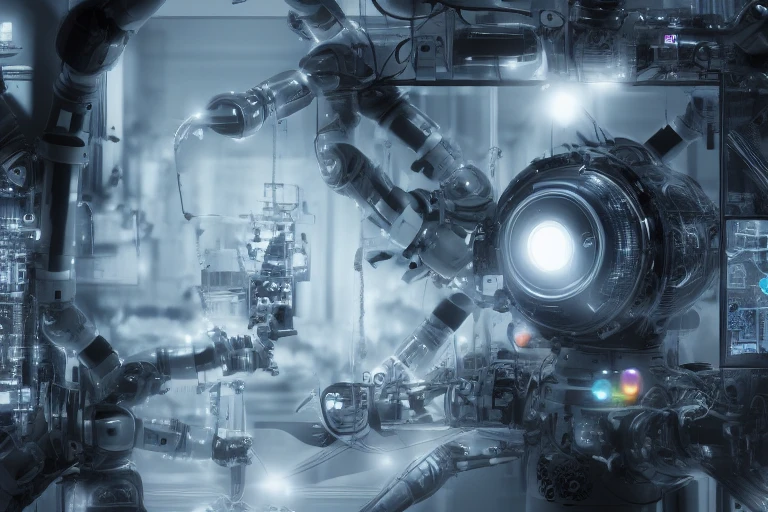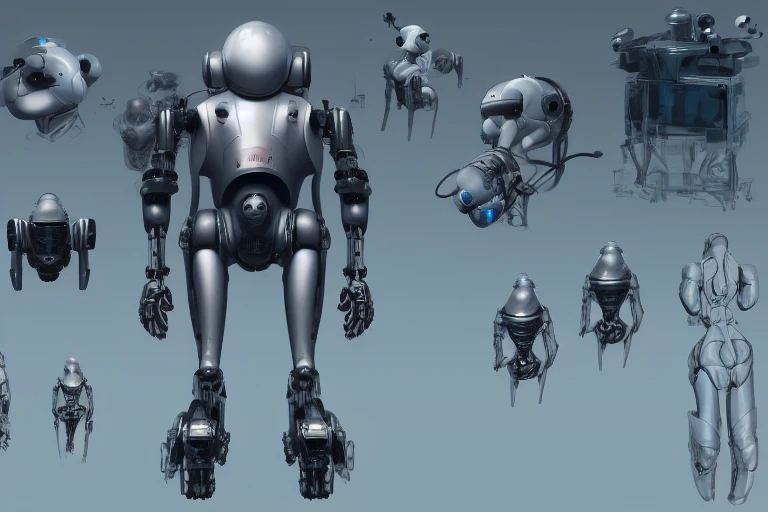Robotics and AI are two of the most popular research topics in the world. Every day, new breakthroughs are made in these fields that could change the way we live and work. But how can you make sure that your research is successful?
In this blog post, we’ll explore some of the ways you can increase your chances of success when working on AI and robotics research. By following these tips, you’ll be able to make the most of your time and resources, and produce results that could have a real impact on the world.

Define your goals
When starting out in AI and robotics research, it is important to have a clear goal in mind. This can be anything from understanding how individual robots behave in specific tasks to creating self-driving cars or surgicalbots. Once you have a goal, it is helpful to divide the task into smaller chunks that you can work on individually. For example, if your goal is to create a self-driving car, you might focus on developing algorithms for navigation and mapping, designing the chassis and interior, and building the computer vision system.
Another factor that can help with success when working on AI and robotics projects is access to high-quality data sets. These datasets typically include information about how different objects or sequences of actions move or interact under various conditions. By having access to these data sets, researchers can train their machines on real-world scenarios rather than artificial ones.

Do your research
In order to succeed with AI and robotics research, it is essential to define your goals. Without a clear plan, you will quickly lose focus in the chaos of pursuing such ambitious endeavors. Additionally, knowing the current state of the field will help you stay informed on what steps are necessary to advance your work.
Start by understanding yourself as an individual researcher. What motivates you? Are you chasing knowledge for its own sake or do you feel a sense of responsibility to share what you’ve learned with others? Understanding your motivations can help guide where and how much time you spend researching specific topics. Be wary of becoming tunnel-visioned however; if a topic no longer interests or inspires you, it’s time to go back to the drawing board and start fresh.
This doesn’t mean ceding all control to outside forces though; it’s important that scientists retain some degree of autonomy in their work in order for them be accountable for their results. Choosing collaborators who share similar values can also boost productivity since working towards a common goal creates momentum and fosters collaboration between team members (even if they’re not physically present). In addition to collaborating with others, be sure also keep up with trends in AI/robots research – whether that means reading leading journal articles or following popular online resources dedicated specifically to this area. Finally, don’t forget regular exercise – even if it’s just lunchtime walks – as overexertion can lead to insights being blocked out because our minds become focused on tasks at hand instead of generate new ideas [1].

Find the right team or partner
Finding the right team or partner for your AI and robotics research can be difficult. There are a number of factors to consider, including the size and scope of the project, the skills and experience of the team, and the funding available.
If you’re unsure where to start, try contacting universities or research institutes that are involved in AI and robotics research. They may be able to provide you with a list of potential partners or collaborators. Alternatively, you can search online for groups or individuals that specialize in AI and robotics research. Finally, you can contact industry leaders to see if they are interested in collaborating on your project.
Get the right equipment
Get started with the basics
It’s important to have the right equipment when working with AI and robotics research, in order to get the most out of your experiments. Here are some basics you need to start working with AI and robotics:
–A laptop or computer that is powerful enough to run the software necessary for your experiments.
–A scanner or camera that can capture images and videos.
–An interface that allows you to connect devices such as robots or computers to your laptop or computer.
Know what you want to achieve
Knowing what you want to achieve is essential when working with robots and AI. If your goal is to create a prosthetic arm that can perform various tasks, for example, you’ll need to purchase or borrow specific hardware and software needed for the project. Likewise, if you’re hoping to develop autonomous vehicles, you’ll need access to specialized sensors and processors. It’s important to be clear about your goals from the outset so that you can allocate appropriate resources accordingly.
Another key factor in successful robotic research is team composition. The right balance of complementary skills between researchers and engineers will help ensure success. In addition, it’s vital to have advocates within the community who are passionate about advancing robotics technology – they can help encourage funding sources and pave the way for new discoveries. Finally, it’s important to be flexible and open-minded as you work on your project – constant progress is achieved through collaboration.
Stay up to date with the latest advancements
The success of any AI or robotics research depends on the quality of the data and the tools used to analyze it. In order to ensure the best results, it is important to have the right equipment.
One of the most important pieces of equipment is a computer with sufficient processing power. The more powerful the computer, the more data it can handle and the faster it can analyze it. It is also important to have a good internet connection so that data can be downloaded quickly.
Another important piece of equipment is a scanner or camera that can capture images and videos. These images and videos can be used to train computer algorithms or to test hypotheses about how machines will behave.
Finally, it is important to have access to software that can help researchers analyze data. Some of the most popular software packages for AI and robotics research include TensorFlow, MATLAB, and Python.
It is also important to stay up to date with the latest advancements in AI and robotics research. This means keeping up with the latest developments in computer algorithms, hardware, and software. There are many resources available to help researchers stay current, including online forums, conference presentations, and journal articles.
Don’t be afraid to ask for help
Having the right equipment is essential for any successful AI or robotics research. However, not all equipment is available to everyone and some may be costly to purchase. Here are a few tips for getting the most out of your hardware:
- Ask around – Friends, family, and colleagues can all provide valuable information about potential hardware purchases. Additionally, online resources like Google search can help you find specific devices or software that meets your needs.
- Use trial and error – Before investing money in hardware, experiment with it first to see if it works as expected. This method can be especially helpful when purchasing expensive items such as computers or robots since you can generally get a good estimate of how much time and effort will be required before making a decision.
- Get creative – There is no one perfect equipment setup for AI and robotics research, so don’t be afraid to experiment with new hardware configurations or software tools. Doing this can help you find the most effective way to achieve your research goals.
- Ask for help – If you encounter any difficulties while using equipment or setting up a project, do not hesitate to ask for assistance from your colleagues or the users of resources such as Google search. This can save valuable time and prevent potential problems down the road.

Train and test often
one of the most important things you can do when working with AI and robotics research is to train and test often. This not only ensures that your algorithms are working as intended, but it also helps to identify any potential problems before they become too big to solve. By regularly testing your software on different datasets and scenarios, you’ll be able to find areas where improvements can be made.

Be patient
Successful AI and robotics research requires patience and perseverance. It is important to train and test often, but also to be open to change and willing to try new methods.

Persevere
AI and robotics research is a difficult and time-consuming process. However, with the right attitude and perseverance, you can achieve great success. Here are some tips to help you succeed:
-
Set realistic goals. Don’t expect to achieve instant success with AI and robotics research. It will take time and effort to develop successful projects. Make sure your goals are reasonable and achievable, and don’t over-commit yourself.
-
Stay organized. It’s important to keep track of your progress and work on specific goals rather than trying to accomplish too many things at once. This will help you stay focused and achieve results faster.
-
Be patient. Don’t get discouraged if your progress is slow at first. It takes time and practice to develop skills in this field, so don’t expect to achieve overnight success. Be patient, keep learning, and stay motivated!
If you want to learn more about how to succeed with AI and robotics research, be sure to check out our other content. We cover topics like goal setting, research methods, team building, and equipment selection. Plus, we offer tips for training and testing your robots, and advice on how to keep going when the going gets tough.

